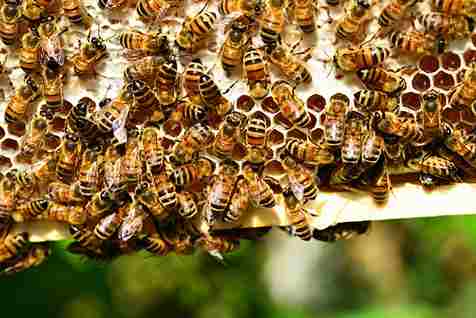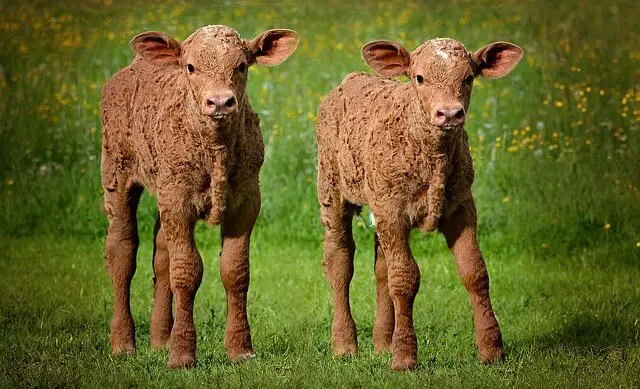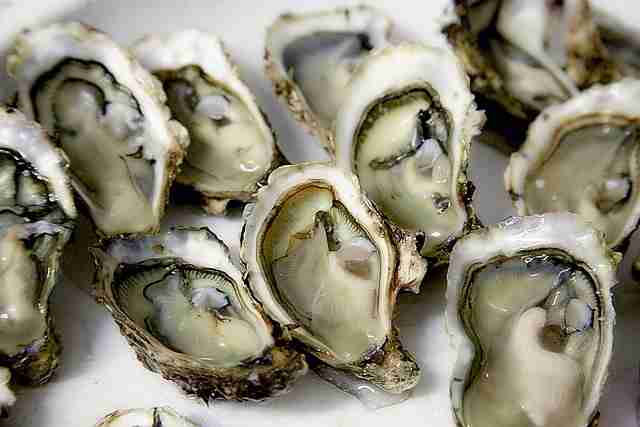How Far Do Bees Travel?
Bees, like other animals, move around for many reasons. It could be to find a mate, to find a home, or to find food. Generally, bees tend to travel long distances in search of food. As you probably know, they get nourished from the pollination of flowers and fruits.
In beekeeping, it is extremely important to keep food and water sources very close to the beehive. This will keep the bees from traveling long distances and expending energy.
Different factors can affect a bee’s travel distance. Some of these include – weather conditions, weight and size of the bee, location of the hive, and proximity to food and water.

How far do bees travel for food?
The distance bees travel for food depends on how close their habitat or home is to nectar and flowers.
Bees can travel a distance from 3 km to 13 km in order to find suitable plants and flowers to pollinate in order to get nectar.
As earlier indicated, bees are not particularly great explorers. They will only go far if they need to. So, the closer the food source (such as flowers), the better!
How far do bees travel for water?
The body of a bee consists mostly of water. As a result, they need a lot of it, especially during times when temperatures are soaring, such as summer.
A typical honey bee can fly up to 8 km just to find water.
In general, bees need easy access to safe drinking water, and just like food, the closer the water body, the better. For someone into beekeeping, creating a pond or small water pool near the hive is highly recommended.
Besides staying hydrated, bees use water to feed their young ones, dilute stored honey, and keep their hives cool. Water may also serve as a source of nutrients.
How far does a bee travel in a day?
A lot of factors can influence a bee’s travel distance in a day. These include climate, location of their hives, availability of food, etc.
Also, different species of bees, such as bumblebees, honeybees, and solitary bees, might cover different distances in a day.
On average, a bee can travel 5 to 10 km in a day. This can be longer, depending on the situation.
Bad weather, such as a heavy storm or rain, can discourage bees from traveling long distances or even traveling at all. They would choose to stay in their hives until the conditions are more favorable for flying.
How far do honey bees travel?
Honeybees travel 1 to 2 km on average but can fly for up to 13 km in search of nectar and water. Some honey bees can even cover 20 km, depending on the location of their hive and its proximity to food and water.
It is not uncommon for them to build large colonies. In this case, the worker bees will need to gather a lot of resources for the hive when there’s scarcity. During such times, they can travel longer distances, up to 14 km, to get enough food.
How far do bees travel from their hives?
This largely depends on the bee species and the location of food.
Generally, honeybees can travel up to 14 km, while bumblebees travel shorter distances, around 625 meters. Also, solitary bees can cover up to 20 km.
As earlier indicated, the worker bees are mostly the ones in the colony that travel to get pollen, nectar, and water for the rest of the hive.
How far do bumble bees travel from their hives?
Bumblebees usually have shorter travel distances, usually within 600 to 700 miles from their hives. Their larger size means they need more energy than other bee species to fly. It is not uncommon to see them flying close to the ground.
As you would expect, bumblebees typically establish their hives in areas close to food and water, so they don’t need to fly long distances.
They also practice a kind of pollination called “buzz pollination,” where they vibrate their wings to dislodge pollen of some flowers more effectively. This is another reason they don’t have to travel much for pollination.
Can a honey bee fly up to 25 km per hour?
Although the typical speed of a honeybee is between 15 to 20 km per hour. Sometimes, they can fly up to 25 km per hour.
Honeybees have evolved to be able to fly at such great speeds. They have a more streamlined shape and flexible wings, which allows them to generate speed and maneuver in the air.
Besides their incredible speed, honeybees can also adjust the energy they use to fly. By using more energy, they are able to cover longer distances at higher speeds. They can beat their wings at high speeds, up to 250 beats per second, which gives them plenty of thrust and lift.
Can bees fly in the rain?
Bees do not fly in the rain or in bad weather. This does not mean that they can’t do it, rather, it’s something they would normally not do to avoid getting beaten and displaced by the rain. Simply put, it’s harder for them to fly in the rain.
Here’s another way to look at it.
Bees have tiny hairs on their bodies and light wings for flying and pollination. Flying in the rain can cause these body parts to get waterlogged and heavier, making flying more difficult.
In addition, bees rely greatly on their vision when flying. They use visual cues to spot food, colors, and their surroundings. Rainy weather can bring about poor visibility, which can make it hard for them to fly effectively and locate resources.
Where do bees go at night?
Bees are not nocturnal creatures. So, you would find them resting in their hives at night.
However, this doesn’t happen by chance. Staying indoors has its benefits.
- Protection: Many nocturnal animals, such as bats and owls, eat bees and other insects. So, staying in their hives protects them from predators.
- Temperature: Bees like warm temperatures. By clustering together in their hive, they can generate enough heat to keep themselves warm.
To conclude, bees can travel long distances in search of food and water. Solitary bees have been seen to travel the longest distances, while bumble bees travel the shortest due to their larger size and weight.
Check out other interesting articles:






